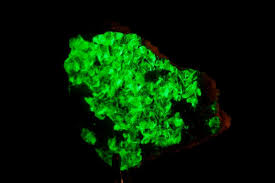Astatine:

An international collaboration led by researchers at the University of Jyväskylä, Finland, detected and measured the half-life of the heaviest proton emitter 188At (astatine) isotope.
- It is a rare and highly radioactive element with atomic number 85.
- It is part of the halogen group (Group 17) in the periodic table, which also includes fluorine, chlorine, bromine, and iodine.
- Unlike the other halogens, astatine has no stable isotopes.
- It’s probably a dark-colored solid at room temperature and pressure, but there is too little of it to know for sure.
- Due to its extreme radioactivity, it has a blue glow from ionizing air. All of its isotopes are radioactive.
- It occurs naturally as a decay product, but has a short half-life.
- It has 41 known isotopes ranging from mass number 188 and 190-229, all of which are radioactive.
- When the 188-astatine emits the proton, it becomes 187-polonium isotope, which has a half-life of only 1.4 milliseconds.
- The 187-polonium isotope then decays via alpha decay into 183-lead and so on, until it reaches a stable nucleus.
- It likely forms compounds similar to iodine but exhibits more metallic characteristics.




